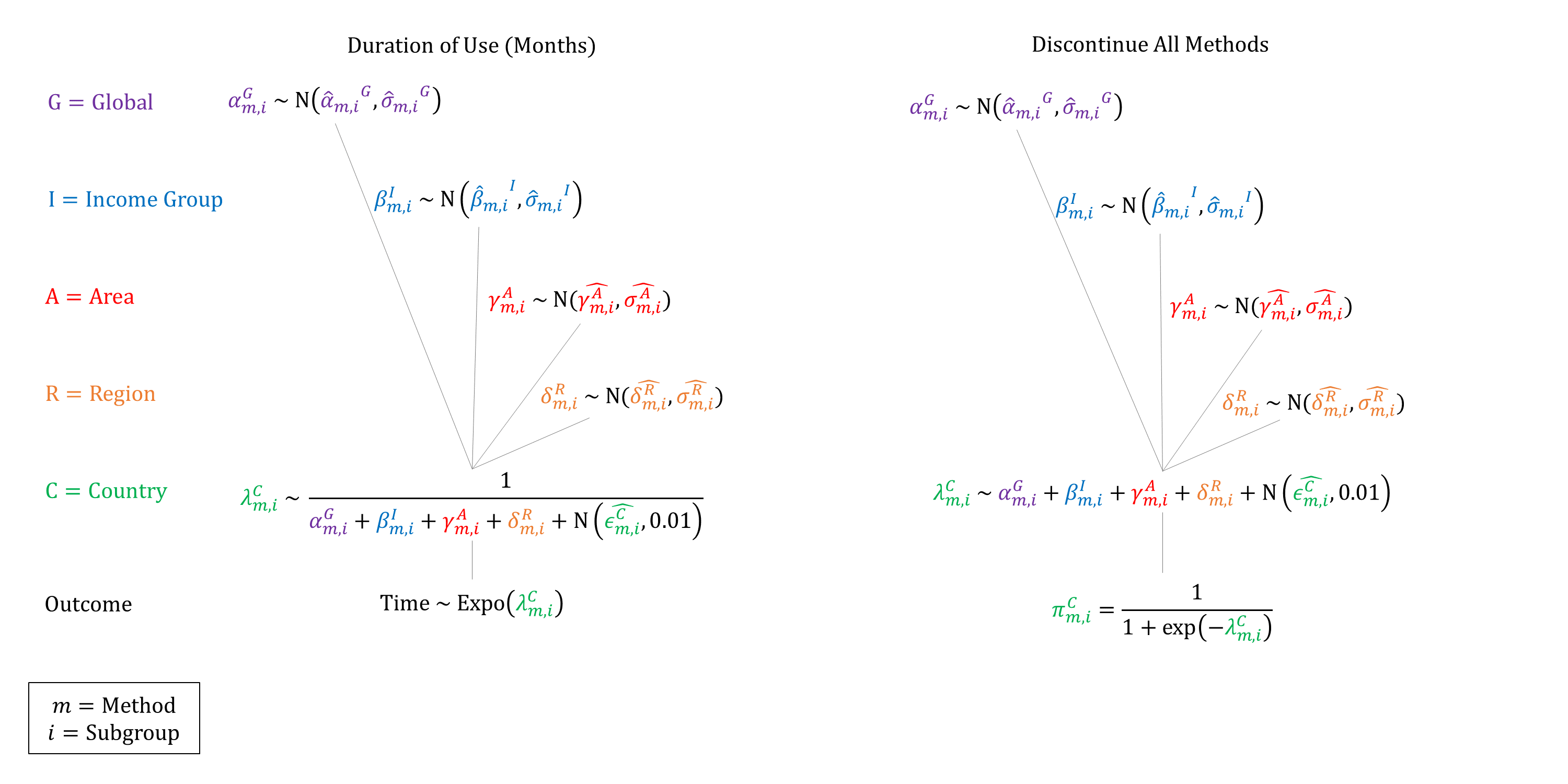Method Duration of Use
Model Inputs \(\rightarrow\) Family Planning Parameters \(\rightarrow\) Method Duration of Use
Overview
Duration of method use is simulated for women using contraception for spacing. We assume that women who are limiting use a method indefinitely until menopause or method failure. Women who are spacing can either switch to another method, or stop using any method of contraception.
Data
We used data on length of current contraceptive use from the DHS. Data on duration of method use were available for 405,932 women from 248 surveys in 75 countries. We also analyzed the reasons given for method discontinuation. We assumed that women who gave any of the following reasons would discontinue use of any contraceptive method:
- Wanted to become pregnant
- Husband disapproved
- Infrequent sex, husband away
- Fatalistic
- Difficult pregnancy, menopause
- Marital dissolution
- Other
For other reasons such as side effects, costs, access, etc. we assumed that the woman switched to a different method.
Here we plot the estimated probabilities that women would discontinue all contraceptive use conditional on the last method they reported using.
Parameters
We fit hierarchical models to the DHS data to estimate priors for the duration of use for each method and the probability of discontinuing use of all contraception at the end of the simulated duration of use. For simplicity, we assumed that duration of use follows an exponential distribution, and used logistic regression models to simulate the probability of discontinuing all methods. We used upper middle income priors for high income countries due to lack of DHS data in high income countries.

Priors
Duration of Use
Stop All Methods
Model Implementation
When a spacing method is assigned, a duration of use (in months) is drawn from the exponential distribution. Duration of use is renormalized so that the maximum possible length is 10 years. If a woman completes the duration (i.e. the method does not fail), the reason for discontinuation is simulated.
GMatH (Global Maternal Health) Model - Last updated: 28 November 2022
© Copyright 2020-2022 Zachary J. Ward
zward@hsph.harvard.edu